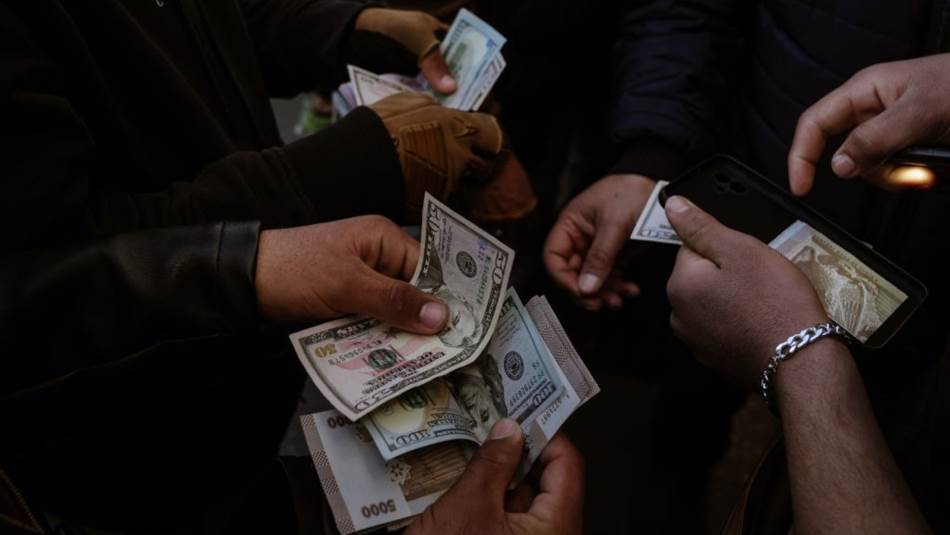In a surprising turn of events, the Syrian pound has witnessed a sharp and unprecedented appreciation against the US dollar in the past five days, dropping below 10,000 SYP per dollar for the first time in nearly two years. While such a surge in value would typically be welcomed, economist and analyst Iyad Jaafari argues that the situation has instead created widespread confusion and economic distress for Syrians.
A Paradoxical Crisis
Jaafari notes that in the immediate aftermath of the fall of the Assad regime, the strengthening Syrian pound initially brought relief to consumers, as it coincided with a notable decrease in the prices of essential goods—some by as much as 50%. However, in the past three weeks, the correlation between the exchange rate and commodity prices has been broken. The cost of goods and services has remained high despite the pound’s appreciation, frustrating expectations that a stronger currency would translate into lower living expenses.
Compounding the economic uncertainty, Syria is facing a severe liquidity shortage in the local currency. Production sectors have stagnated, and many workers have lost their jobs, particularly as markets increasingly favor high-quality, low-cost Turkish imports. Informal street vending has become rampant in major cities, adding to economic disorder.
Two Sides of the “Pound Dilemma”
According to Jaafari, the Syrian pound’s rapid appreciation has created a dilemma for two major segments of the population:
- Dollar Holders and Savers: Over the past years, many Syrians accumulated US dollars as a hedge against economic instability. Now, they are being forced to sell at significantly lower rates than they bought, fearing that if they do not act quickly, they may suffer even greater losses. The central bank’s refusal to exchange dollars or buy Syrian pounds has only exacerbated these concerns.
- Syrians Dependent on Remittances: A significant portion of the Syrian population—potentially up to two-thirds—relies on money transfers from relatives abroad. With the pound gaining value against the dollar while commodity prices remain unchanged, the purchasing power of these remittances has plummeted. For instance, a family that previously managed with $300 per month now needs $400 to maintain the same standard of living.
Uncertainty Surrounding the Central Bank’s Role
Jaafari highlights that the Central Bank of Syria has kept its official exchange rate fixed at 13,000 SYP per dollar since January 5. This discrepancy between the official and black-market rates—now around 9,500 SYP per dollar—suggests that the current appreciation of the pound may be temporary, with the market expected to correct itself soon.
The Central Bank has further fueled speculation by freezing numerous Syrian bank accounts and setting restrictive withdrawal limits, leading some to suspect that the institution itself is facing a liquidity crisis. There are even unverified reports of substantial amounts of Syrian currency being stolen from the bank’s branches in the chaotic hours following Bashar al-Assad’s flight from the country.
Who Controls the Parallel Market?
A critical question raised by Jaafari is: Who is influencing the black-market exchange rate in Syria? Many suspect that a group of powerful traders is manipulating the dollar’s depreciation to buy foreign currency cheaply before driving the price back up. However, given the unprecedented number of people engaged in informal currency trading—ranging from small business owners to grocery store operators—identifying key players remains difficult.
Unlike in previous years, Syria’s parallel market appears to be exerting upward pressure on the local currency, rather than devaluing it, which is unusual in both Syrian history and in comparison with neighboring economies. This anomaly has made predicting future exchange rate trends particularly challenging.
The Role of External Support
The only viable solution to this crisis, according to Jaafari, is external financial assistance in the form of foreign currency reserves. There has been growing speculation that a substantial deposit may soon be placed in the Central Bank—potentially from Qatar or Saudi Arabia. The recent visits of Qatar’s Emir to Damascus and Syrian President Ahmad al-Sharaa to Riyadh have fueled expectations of significant economic support.
If the Central Bank secures enough foreign currency reserves, it could stabilize the economy by strategically injecting dollars into the market while simultaneously releasing more Syrian pounds. However, such measures must be carefully calibrated to avoid triggering another sharp devaluation.
The Road Ahead
If foreign aid fails to materialize, Jaafari warns of a dramatic reversal in the black-market exchange rate, inflicting heavy losses on those who have recently sold their dollars. Given the uncertainty, his advice to dollar holders is to exercise caution and avoid liquidating their foreign currency holdings unless absolutely necessary.
With Syria’s economic landscape in uncharted territory, the coming weeks will be critical in determining whether the pound’s surge is sustainable or merely a prelude to another financial crisis.
This article was translated and edited by The Syrian Observer. The Syrian Observer has not verified the content of this story. Responsibility for the information and views set out in this article lies entirely with the author.


